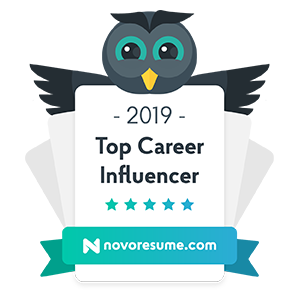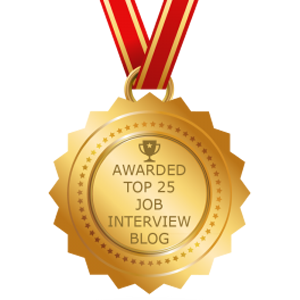The executive job market is competitive. This means your resume has to be equally competitive if it’s gong to stand out from the crowd. In this blog post we will share how the executive application process has changed and how you can adapt with some simple resume trends.
As an accomplished executive, you’ve spent the last 10+ years climbing the corporate ladder, developing critical skills and working tirelessly to build a name for yourself in your industry. As you get ready to update your resume for the next big opportunity or to shop around in your market, you might be feeling overwhelmed with the task of trying to capture everything on 2 sheets of paper. Where to start?! As someone who has spent many years writing professional resumes for executives, I’ve experienced the first-hand shock of clients at the visual simplicity of their summarized accomplishments on paper after hiring a professional resume writer. The truth is: The application process has evolved since the last time you’ve applied for work and you’ll need to take note of current trends if you’re hoping to compete in today’s job market.
How the Application Process Has Changed
All applicants feel like they have to try to stand out from the crowd somehow, and I have seen some interesting methods: special paper, crazy and creative fonts, and colorful graphics. But what looks good to you might not look good to a recruiter. In fact, all that creative work you thought would make your resume stand out visually might actually block it from successfully getting through a company’s applicant tracking system (ATS). The ATS, like the human eye, favors simplicity.
Think about it: if you go to the resume section of Staples, you’ll simply find many versions of white paper. Most application submissions are electronic now; paper doesn’t matter.
What Really Happens After You Submit Your Resume
There are so many people applying to any one position that companies now follow many steps to hiring. They use ATS and other search engines to keep track of the onslaught and to electronically filter out hundreds—sometimes thousands—of applicants. If your resume makes the initial cut, Human Resources will probably print your resume on its own plain white printer paper. Regardless of the size of the company, a person then has to review multiple resumes for interviews. The reviewer wants the resume to be calming and easy to read and will look for any reason to discard an applicant. If you chose a fancy script font, lack of readability might be a reason to discard your resume. Also, sometimes there are compatibility issues from machine to machine and system to system. It’s best to stay as plain as possible. Plain formatting and appropriate white space with one to two simple fonts, maximum. No fancy borders. No charts. No graphics. Check how your name looks–can you read it?
“The verbiage used in the resume helped to tell the story in such a compelling way. The resume makeover process renewed my self confidence. I have truly experienced a mindset shift. I am confident I will get more interviews and ultimately receive multiple job offers. – Audrey, Executive & Resume Makeover Client
Why You Need to Adopt New Resume Best Practices
If all this seems contrary to what you’ve been told about resumes in the past, know that this resume format is based on research into the latest recruiting practices and the current job market. The purpose of your resume is not to make you feel warm and fuzzy. The purpose of your resume is to get past the ATS and into HR’s hand so you can to land an interview. There you can expand on your resume and talk about how you will help the company and all those fantastic and impressive achievements you’re so proud of. Don’t let what you think looks good on a resume stand in the way of what works for the hiring system. Instead, work with the hiring system.
The Key to a Successful Resume
On receiving a professionally written first draft, some executive level clients have responded, “This is a plain Word document!” as if they were expecting some kind of complicated 3-D model instead. That’s right—it might feel really awkward to do so, but you have to keep your resume simple. Substance is the key to a successful resume. It’s okay if you’re unhappy with the resume— as long as the recruiter is happy with it. The more simple the resume, the more likely the chances of landing an interview. The worst thing you could do as an executive is submit a designer resume you created from an online resume builder. While it may look fancy, designer resumes will not brand you for the executive level. They will be better suited for someone much more junior.
Access Noelle’s List of Over 300 Executive Recruiting Firms Worldwide & Other Executive Suite Services!
What HR is Really Interested in with Executive Resumes
Human Resources will not care about the pretty bird your best friend drew in the background or whether the type is gray-black or deep black. The company needs help. The company needs growth. Your accomplishments and overall content should speak to those needs. Stop worrying about the paper and start explaining all the ways you have helped companies stay in the black or expand. Share that example of how you launched a successful new product. Companies like that. Listing strong accomplishments is one way to make your resume stand out against the competition.
How to Make Your Executive Resume Stand Out from the Crowd
The visual appeal, or formatting, is another way to stand out in a pile of resumes. There are some executive resume basics that you’ll want to consider before sitting down to write your resume. The format is a critical part of this. There are a few different formatting options to choose from, depending on your next career move. Once you’ve selected the format it’s important to include a few critical parts that will optimize your resume’s visual and content impact:
- A descriptive title that is specific to each position you apply to
- A tagline or subheading that gives a general overview of your talent using keywords
- A summary of your experience and accomplishments that is supported by specifics from your background
- Core Competencies/Key Skills names specific skills you use in your field pulled from your experience
- Job descriptions in justified paragraphs followed by bulleted accomplishments.
This format provides plenty of opportunities to describe what you’ve been doing and how you’ve succeeded at each position. You also add juicy, searchable industry keywords in their appropriate context.
How to Stand Out as a High-Achieving Executive
Make your statements short, specific, and focused on the job you want. Start each statement with a verb, if possible. Try some of these high impact resume keywords. The more descriptive action words you use to characterize your duties and accomplishments, the more you seem like an achiever. You’ve gotten this far in your career; if you want to further advance, then you want to come off as an achiever, a contributor who really creates benefits for a company. Try this formula for generating your career achievements.



 How to Find Your Perfect Career Fit and Focus Your Brand
How to Find Your Perfect Career Fit and Focus Your Brand


